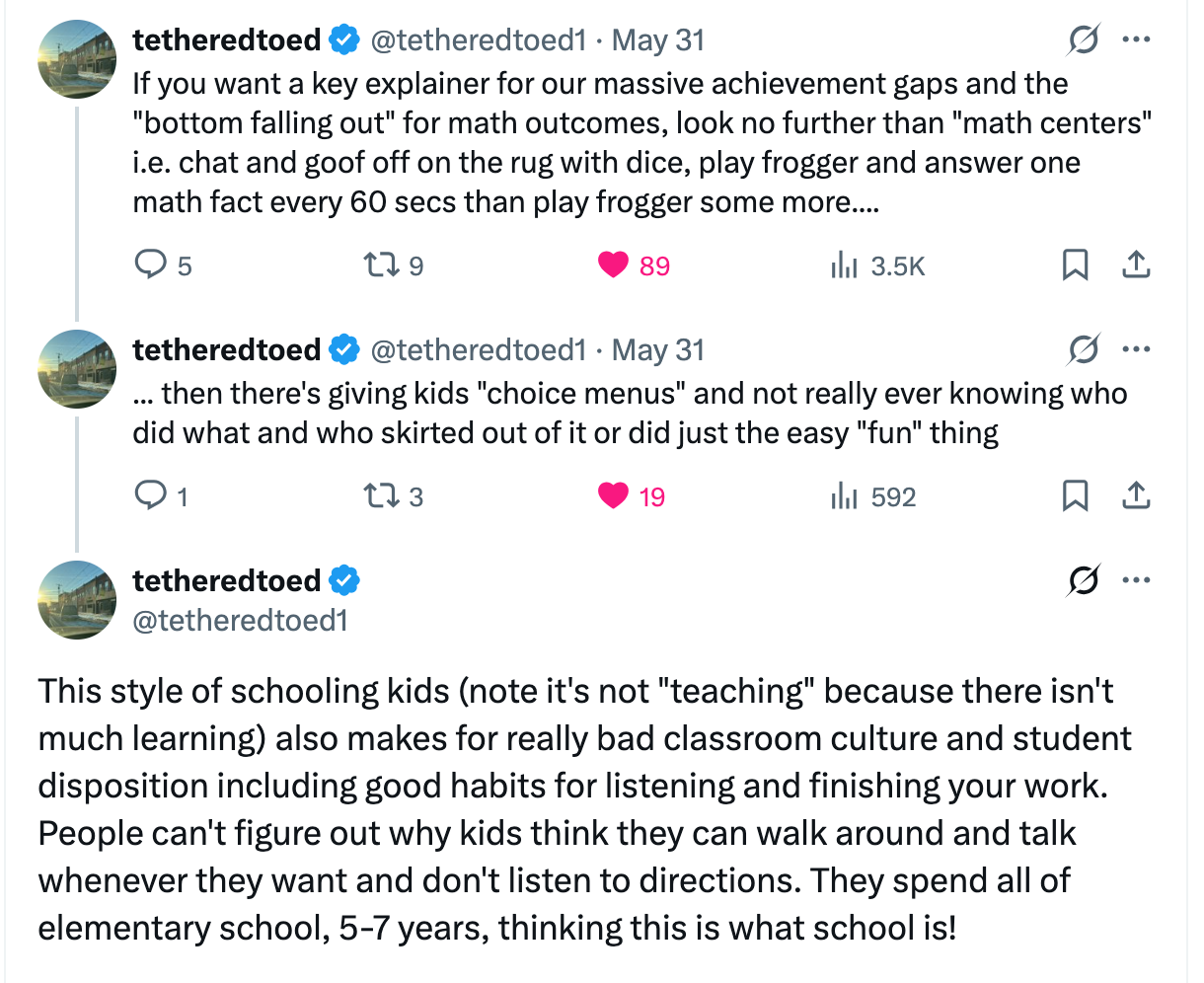With all the talk about Science of Reading™, I really started thinking the other day about how far reading instruction has fallen; in 1st grade, I had an anthology book, a workbook that went with the storybook and then we had a phonics workbook. I can still picture exactly what they looked like. The phonics book had a red plaid cover, the anthology and workbook had some sort of nature scene on the front. They used them all way up in my elementary school, 1st through 6th. I would love to get my hands on those books, for no other reason than to pore over them and see how it was possible that we, the children of the early 1990s, were taught to read (all of us) with such simple materials. I have no idea what series they were or what they were called.
But all this talk about Reading (capital R) has made me wonder about math. I haven’t taught math the last two years. I worked in a departmentalized elementary school so I taught all of the English Language Arts components instead. But I did teach math for {stops to count…] 13 years if you count my substituting and student teaching years. Most of it was 4th grade math, but I dabbled in primary and then I would sub in the 5th and 6th grade classrooms occasionally. One day, I was in a middle school (literally, “one day”) and I observed a then-student teacher going about her 8th grade math lessons.
I’m frontloading my experience so you take what I have to say about math instruction semi-seriously; I have used Saxon Math, MacMillan McGraw Hill, Houghton Mifflin Harcourt (Go Math), Envisions Math from Savvas, Everyday Math, and, one year, my teammate and I wrote our own math curriculum because the district was between curriculums (that was the Super Teacher Worksheets Curriculum Special but man, the repetition and practice: those kids learned!).
I was taught early on that math instruction needed to be explicit, repetitive, and spaced instead of massed. It fits perfectly into the direct instruction model: hook, modeling/guided practice, independent practice, review. You introduce the essential question or objective, you let them brainstorm and try to solve a problem whole group using what they already know, you model how to solve the problem, you guide the class through practice together, you assign independent work, you watch them complete it, you check it, you clear up any misconceptions whole-group as a quick review at the end, assign homework if you want to (I always did). That is 60ish minutes of math. If you have more than 60 minutes, you can do some extra games or centers (we never had time). I always did 24 problems with the middle grades to get their brains in gear and they loved it. We did a lot of extra multiplication and division review and games as well, because those are the skills that need automaticity before they went to 5th grade.
All that. My entire career. Spanning 13 years and 5 states.
This is what I saw in math instruction for the last two years:
This is a teacher I follow on X. I don’t know who they are or where they work, but I saw this tweet and it put everything I’ve been thinking for months into succinct little posts so I wanted to share. The situation is pretty dire when it comes to math instruction and teachers crying out for autonomy. Autonomy doesn’t equal achievement.
*I would actually say more and give specifics but I’m not looking to publicly throw anyone under the bus. The point is that math instruction needs to be direct instruction and schools that are allowing ^all that should be held accountable by parents and taxpayers.


